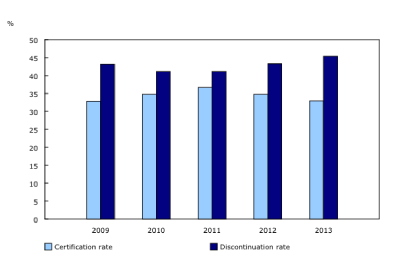SaskPower Updates Progress on Renewable Electricity

November 30, 2017
SaskPower is making progress on its path towards a cleaner future and its goal of doubling the percentage of renewable electricity generation capacity by 2030.
“Developing cleaner electricity generation options is essential to power Saskatchewan’s future, and I’m excited to see that future continuing to take shape,” said Tim Eckel, SaskPower’s vice president of asset management, planning and sustainability. “In the past two years we have started a number of new renewable generation projects as well as projects that support renewable integration. Saskatchewan people will see more of that as we continue towards 2030.”
Two years ago, SaskPower announced it would reduce emissions by 40 per cent below 2005 levels by 2030, which will involve doubling the percentage of renewable electricity from 25 per cent of overall capacity to as much as 50 per cent.
Since 2015, SaskPower has:
- Announced plans to add 60 MW of ground solar generation by 2021 through a combination of competitive procurement, a partnership with First Nations Power Authority and community projects;
- Launched the competitive process for Saskatchewan’s first 10 megawatt (MW) utility-scale solar project, with the successful proponent expected to be named by the of this year;
- Launched the competitive process to buy up to 200 MW of wind generation, with the successful proponent expected to be named in spring 2018;
- Started construction on the Chinook Power Station in January 2017, which will add 350 MW of natural gas generation and provide important baseload power to support future integration of intermittent renewable generation sources like wind and solar;
- Announced site considerations for the province’s next 350 MW to 700 MW natural gas plant, which could be needed as early as 2023;
- Signed a power purchase agreement with DEEP Earth Energy Production Corp. in May 2017 that will allow further research into the potential for Saskatchewan’s first geothermal power project;
- Announced two new flare gas power generation projects, which came into commercial operation in 2016 and 2017, providing a combined 1.75 MW of electricity to Saskatchewan’s power grid; and
- Seen significant growth in its customer self-generation programs.
Along with increasing renewable generation, SaskPower must also respond to the province’s growing demand for electricity by increasing its overall generation capacity. We are evaluating the full range of generation options, which will allow us to determine the portfolio that best allows us to deliver reliable, cost-effective and sustainable power. The image below shows where we are headed and how we plan to meet our goals by 2030.

For further information on Saskatchewan’s cleaner power future, visit saskpower.com .
At a glance…
- SaskPower to increase renewable electricity generation from 25 per cent today to as much as 50 per cent by 2030
- Wind power capacity will increase from 221 megawatts (MW) now to approximately 2100 MW by 2030
- 60 MW of solar generation to be added by 2021
- Competitive process for province’s first 10 MW utility-scale solar project now underway















